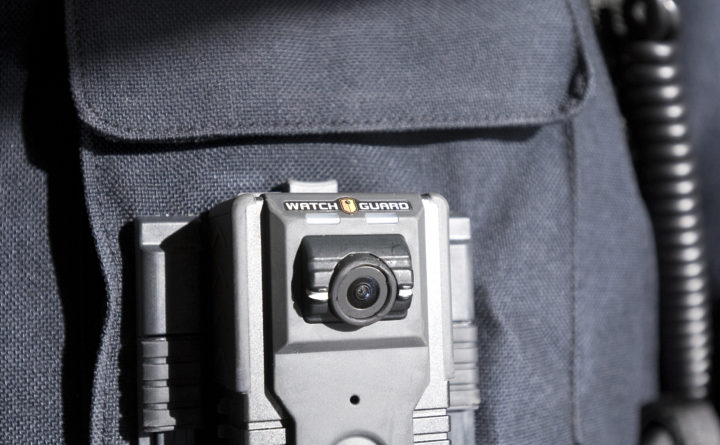Brewer Police test body cams
As the two departments settle on camera models, consider how best to store their officers’ footage and write policies governing the cameras’ use, they might find answers in Orono, where officers have used body cameras since early 2016.
“They have been well worth the investment,” Orono police Chief Josh Ewing said.
The Brewer Police Department has tested a number of different body camera models over the past six weeks, and the department recently received a $5,000 grant from the Walmart foundation to purchase cameras for its 20 full-time officers. The city will hold that money in a reserve fund until the department settles on which cameras to buy.
Most body cameras — which officers wear on their uniforms — are roughly the size of a credit card, and they record police interactions while officers are on the beat.
Police departments across the country have turned to the devices in recent years as part of an effort to demonstrate transparency and to deter illegal behavior by both citizens and police, according to the Bureau of Justice Assistance, a unit of the U.S. Department of Justice.
Brewer police Chief Jason Moffitt said his department expects to decide on a body camera model by Christmas. So far, the department has narrowed its camera choices down to two brands, WatchGuard and Axon, but still has to determine costs associated with the storage of video footage.
Moffitt said the department hasn’t yet decided whether to store footage from body cameras locally or opt for cloud-based storage. Brewer police will develop policies to determine when the cameras will be on and recording after they decide which ones to buy, Moffitt said.
[New cruiser camera system gives Brewer police 360-degree eye on suspects]
Meanwhile, the Bangor Police Department has plans to purchase body cameras so that it can test the technology early next year.
The department hopes to launch a pilot program for the cameras in February, then report back to city officials late in the spring, Chief Mark Hathaway told the Bangor City Council during a meeting on Nov. 8.
Once the pilot program is complete, the department will present a cost analysis and vendor recommendations to City Manager Catherine Conlow. It’s working on the project with the city’s information services department.
“Full implementation will follow once a funding source has been identified,” Hathaway said in an Oct. 31 memo to the council.
The Orono Police Department has been using eight body-worn cameras, shared by its 11 officers, for almost three years. Ewing, the police chief, said they were worth the almost $10,000 investment.
“There was some apprehension at first but almost immediately the benefits outweighed the fear the officers had,” Ewing said. “Nationally we’re seeing much more scrutiny of law enforcement actions. This is an immediate way of allowing for that accountability and transparency.”
[Maine law shields police videos from public scrutiny]
Multiple times, Ewing said, disputes about police officers’ and citizens’ behavior have been resolved using body camera footage, and there have been no complaints from community members about privacy, as officers stop recording when entering sensitive areas such as hospitals.
“If somebody complained about the way an officer behaved, we can go back and view the body cam, and it’s typically exonerated officers,” he said. “We can use it in our cases like [an operating under the influence] stop or an arrest at a residence where we’ve interviewed people. Having recorded all of it only helps to prove the case.”
Orono police also plan to switch from local server storage of camera footage to cloud-based storage in the near future because of the cloud’s extended storage capacity, Ewing said.
A number of law enforcement agencies elsewhere in Maine have started using body cameras in recent years, including the Portland, South Portland, Farmington and Houlton police departments and the Androscoggin County Sheriff’s Office.
“They have become more and more popular around the country as another tool law enforcement is experimenting with,” said Robert Schwartz, executive director of the Maine Chiefs of Police Association. “Body cameras can be as good as they can be bad. They can protect an officer as well as they can protect a citizen.”
BDN writer Charles Eichacker contributed to this report.


